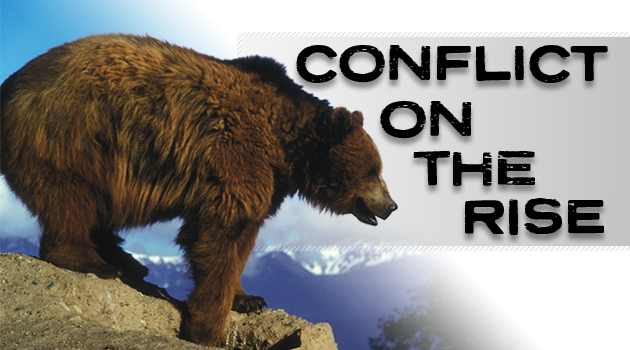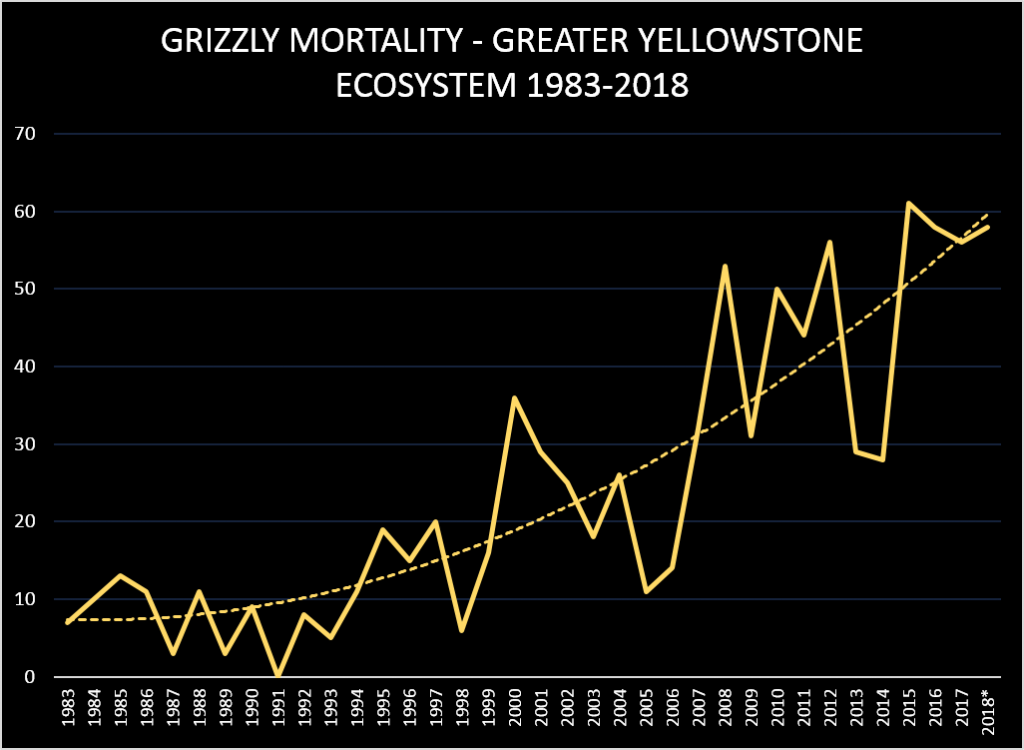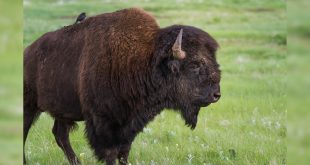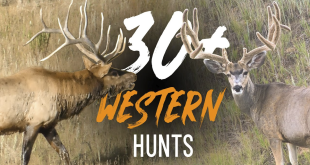
Grizzly Death Rate is Accelerating
Deaths of grizzly bears in the Greater Yellowstone Ecosystem (GYE) are on track to set a new record in 2018. Just since September 1, 11 bears have been euthanized, bringing the year-to-date total up to 58 with the high-conflict fall season just unfolding.
The old record was 61, set in 2015, and death rates have been accelerating over the last three decades. During 2000-2009, the average number of bears killed was 27.5. But, since 2010, that has climbed to 48.9. That average could be as high as 50+ once 2018 is finished (see the nearby chart). In fact, 2018 will be the fourth year in a row that grizzly mortality has exceeded 55 bears. That’s with no hunting season.

Too Many Deaths or Too Many Bears?
If you do the math, 55 dead bears out of an estimated population of 800 is about 7%. The reason that concerns people is that grizzly population growth, which around Yellowstone was 4%-7% per year from 1983-2001, has slowed in recent years to more like 0%-2% due to fewer cubs and yearlings surviving. Since 7% is significantly more than 2%, people are concerned that the total number of bears is declining. Of course, that growth rate is after counting mortalities from different causes, but still there is no doubt that fatalities from human-bear conflicts are increasing. Add proposed hunting seasons of say 22 bears on top of that 55 and you have fuel for an intense debate.
On the other side are people who point to the big increase in human-grizzly conflicts as evidence that the bear population is too high. They will point to at least one study that shows the GYE is about at carrying capacity, one evidence for which is the increasing number of grizzlies spotted outside the GYE and closer to human habitation and livestock.
What’s Going On?
What’s behind the increase in human-grizzly conflicts and the number of dead bears, especially since grizzly numbers in the area have been relatively stable at around 750-800 for several years?
All you have to do is look at the sea of brown pine trees on Rocky Mountain hillsides that used to provide pine nuts for grizzlies to see one reason. Whitebark pines are down more than 70% and their fatty seeds were often a staple of grizzly diet in the fall and to a lesser extent in the spring. One study showed that the reason for bears being lower and closer to homes is that bears stay higher when whitebark pine nuts are plentiful.
Another is the huge falloff in cutthroat trout numbers, another bear staple. Add in lackluster berry production, another casualty of warmer weather, and it’s not hard to imagine that grizzlies might increasingly be feeding on elk quarters or gut piles and livestock. To a hunter, a gunshot often means hundreds of pounds of great eating and maybe a trophy set of antlers. To a bear, it’s a dinner bell. When they show up at the table, they are rather impolite and don’t share well. Several years ago, 20% of fatalities were from self-defense. That percentage has been going up.
Spreading Range
Another issue is that bears are increasingly being encountered outside the Demographic Monitoring Area (DMA). The leading cause of grizzly mortality (34% back in 2010) has been being euthanized for being too close for comfort to expanding civilization, if you want to call it that, and that percentage is increasing. Montana has also had 11 bears die from being struck by cars this year. Add in several percent more for livestock damage and about half the mortality has apparently been due to bears and humans each expanding their range. Poaching deaths and uninformed hunters misidentifying bears likely are more prevalent when bears come to town, or at least closer to it. The same goes for “problem bears” being euthanized.
Ideas?
Neither hunters nor anti-hunters want to see grizzlies dying from being euthanized, well, at least not in general. When a grizzly is on your porch or in your herd or charging you as you quarter an elk, you might feel differently. But overall, reducing bear-human conflicts is a good thing.
What can be done about it? Well, there are some ideas, but since I’m out of space for now, I’ll just throw it out to you. How would you reduce dangerous grizzly conflicts and fatalities?
 Eastmans' Official Blog | Mule Deer, Antelope, Elk Hunting and Bowhunting Magazine | Eastmans' Hunting Journals
Eastmans' Official Blog | Mule Deer, Antelope, Elk Hunting and Bowhunting Magazine | Eastmans' Hunting Journals





I have been saying this for awhile now. We need to trap and move the bears to new locations within their historical range. Other National Parks have the space and natural resources to sustain them.
Perhaps the USFS and US Fish and Wildlife could get together and take a pass on NOT EXTINGUISHING FIRES in the WILDERNESS, for purposes of maintaining a food source for the bears. Look at the south fork of LOLO in the Bitterroots which burned for days, before nothing was done. Now the entire valley is toast.
Thanks for the statistics. As for an answer to the problem, my guess is there are most likely several ways we humans could improve to better coexist with the grizzlies and other wildlife. If we put thought to it after all we can’t depend on the wildlife to improve the problem, but at the same time, we (mankind) are part of nature as well. Therefore, because we are thinkers and problem solvers, responsibility for future generations is in our hands to a degree. Maybe we can limit the death toll from euthanasia of grizzlies searching food from private land by seeding natural foods in a limited access area. I personally really don’t have answers to this dilemma. I’m sure there are must more qualified individuals than I to come up with resolutions that may or may not help the current grizzly situation. I think what man has forgotten is that nature will take its own coarse regardless of our intentions. We may prolong the end result, but eventually nature will win out. What we as humans do today, as you know, will affect the world in the future. That said, we must not forget nature will be what nature is meant to be, it is always very beautiful and at the same time very cruel and very ugly.
There is a very simple solution to this problem which is a Grizzly season to keep them in check as responsible stewards.
I think we should trap and reintroduce Wolves and Grizzlies in any Mountain Range with enough area to sustain them. Start with the Smokies, Appalachian, Poconos, iron Range, etc then work our way west. Let everyone enjoy the cry of the Wolf and the feeling of solitude brought by a Sow Grizzly with a couple of 2 year old Cubs standing in your Hiking Path. Let EVERYONE enjoy them
you must live in the city. I for one do not want meet one. I will give you to guesses who would win!
My guess is numbers are underreported. We need a season. Harvest some older bears. Once they are actually hunted they will be less inclined to interact and engage with humans and if they do they might be part of the harvest. Easier said then done as we found out in Wyoming this year.
Good write-up